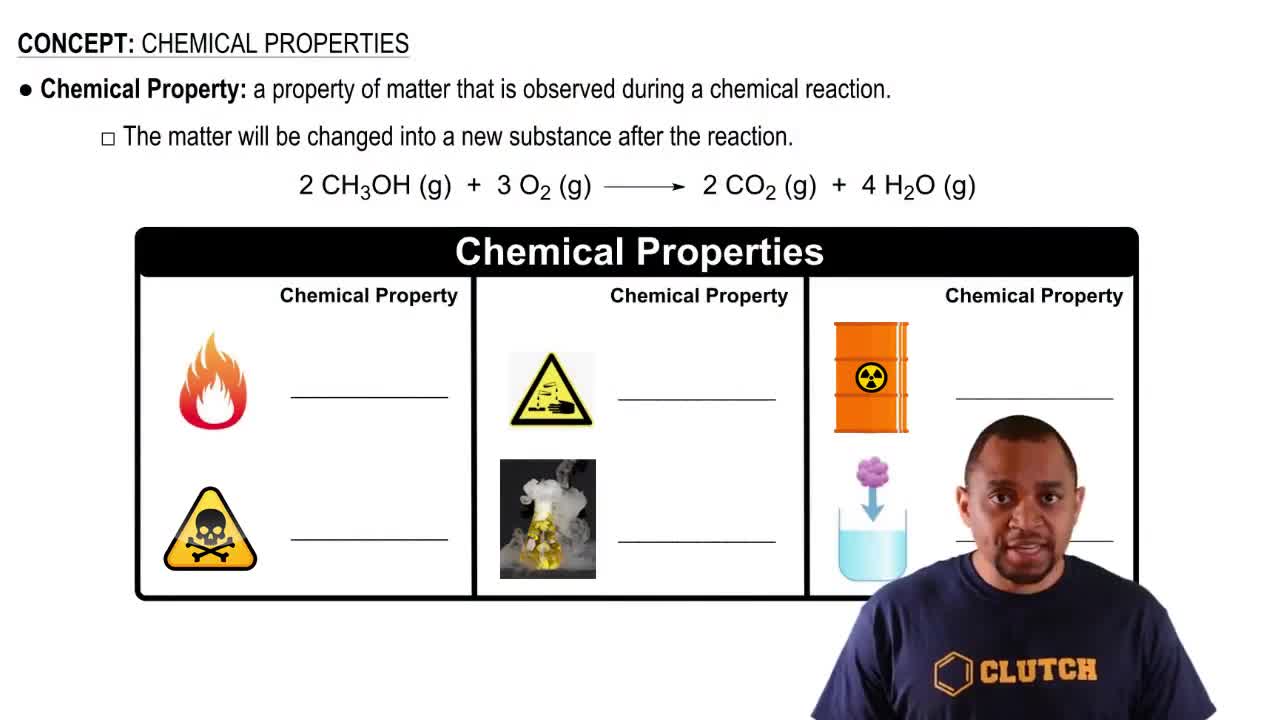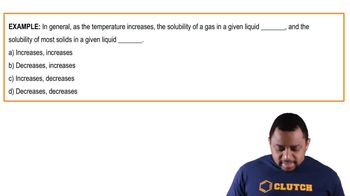(b) An automobile speedometer with circular scales reading both miles per hour and kilometers per hour is shown. What speed is indicated, in both units? How many significant figures are in the measurements?
Ch.1 - Introduction: Matter, Energy, and Measurement
Chapter 1, Problem 12
The photo below shows a picture of an agate stone. Jack, who picked up the stone on the Lake Superior shoreline and polished it, insists that agate is a chemical compound. Ellen argues that it cannot be a compound. Discuss the relative merits of their positions.
 Verified step by step guidance
Verified step by step guidance1
Agate is a form of microcrystalline quartz, which is primarily composed of silicon dioxide (SiO_2).
Jack's position that agate is a chemical compound is based on the fact that its primary component, silicon dioxide, is indeed a chemical compound.
Ellen's argument might be based on the fact that agate is not a pure chemical compound but rather a mixture of silicon dioxide with various impurities and trace elements that give it its unique colors and patterns.
Agate's formation involves the deposition of silica from groundwater in cavities of volcanic rocks, which can include various other minerals and elements, making it more of a mineral mixture than a single compound.
In conclusion, while agate contains a chemical compound (SiO_2), it is not a pure compound itself due to the presence of other materials and impurities.

Verified video answer for a similar problem:
This video solution was recommended by our tutors as helpful for the problem above.
Video duration:
3mWas this helpful?
Key Concepts
Here are the essential concepts you must grasp in order to answer the question correctly.
Chemical Compounds
A chemical compound is a substance formed when two or more elements chemically bond together in fixed proportions. Compounds have distinct properties that differ from the individual elements that compose them. For example, water (H2O) is a compound made of hydrogen and oxygen, exhibiting unique characteristics not found in either element alone.
Recommended video:
Guided course

Chemical Properties
Minerals and Rocks
Minerals are naturally occurring inorganic substances with a definite chemical composition and crystalline structure. Rocks, such as agate, are solid aggregates of one or more minerals. Agate is primarily composed of silica (SiO2) and is classified as a mineral rather than a chemical compound due to its natural formation and lack of a fixed chemical formula.
Recommended video:
Guided course

Henry's Law Example
Geological Classification
Geological classification distinguishes between minerals, rocks, and other natural materials based on their formation and composition. While compounds are defined by specific chemical formulas, rocks like agate can consist of various minerals and may not adhere to a single chemical structure. Understanding this classification helps clarify the debate between Jack and Ellen regarding the nature of agate.
Recommended video:
Guided course

Ligand Classification
Related Practice
Textbook Question
567
views
Textbook Question
(a) How many significant figures should be reported for the volume of the metal bar shown here?
328
views
Textbook Question
Consider the jar of jelly beans in the photo. To get an estimate
of the number of beans in the jar you weigh six beans
and obtain masses of 3.15, 3.12, 2.98, 3.14, 3.02, and 3.09 g.
Then you weigh the jar with all the beans in it, and obtain a
mass of 2082 g. The empty jar has a mass of 653 g. Based on
these data, estimate the number of beans in the jar. Justify
the number of significant figures you use in your estimate.
884
views
Textbook Question
Classify each of the following as a pure substance or a mixture. If a mixture, indicate whether it is homogeneous or heterogeneous: (a) air (b) chocolate with almond
Textbook Question
Classify each of the following as a pure substance or a mixture. If a mixture, indicate whether it is homogeneous or heterogeneous: (c) aluminium
802
views
Textbook Question
Classify each of the following as a pure substance or a mixture. If a mixture, indicate whether it is homogeneous or heterogeneous: (d) iodine tincture.
788
views
